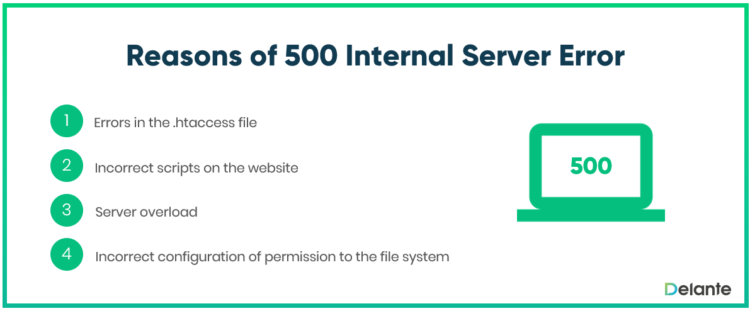What is a 500 Error? – Definition
500 error (also known as HTTP Error 500 or HTTP 500 Internal Error) is an internal server error that informs that it has encountered difficulties while processing a given request and failed to execute it. In other words, the server on which the website is located is not able to display its content due to some undefined errors. There may be many reasons for the HTTP error 500, however, the most common are:
- errors in the .htaccess file,
- incorrect scripts on the website,
- server overload caused by high web traffic,
- incorrect configuration of permission to the file system.
How Can Users Fix the 500 Error?
As a user of a given website, you don’t have many possibilities to fix the 500 error as the error was caused by the server. Wondering how to fix HTTP Error 500? You can only try to reload the page repeatedly as this problem may be caused by a temporary overload. If this doesn’t bring any results, it is worth clearing the browser cache. If both solutions fail to work and the site is not available for a long time, you can contact the site owners to inform them that you weren’t able to reach the website.



